Foundation for Rural & Regional Renewal (FRRR)
Last month, FRRR had the great pleasure of hosting a number of our Corporate Partners at ANZ’s offices in Sydney for a discussion about How corporate philanthropy can foster strong vibrant rural communities. With representation from multiple industries, the conversation was far-reaching – covering everything from telecommunications challenges to housing affordability.

Jenefer Stewart, ANZ General Manager, Business Banking, opened the roundtable and talked about the wonderful 20-year partnership that FRRR & ANZ have shared, including the extremely successful Seeds of Renewal Program. It has provided more than $5 million in grants to over 800 community groups during the lifetime of the partnership.
Jenefer highlighted the importance of supporting regional and rural communities, and also discussed the enormous benefits to ANZ employees involved in the Program.
“Our 20-year partnership with FRRR aligns strongly with ANZ’s purpose and our ongoing commitment to support vibrant and sustainable rural communities to ensure the ongoing prosperity of regional Australia.
“In addition to the benefits to regional Australia, the Program provides a great opportunity for our employees to be more involved with the Program by volunteering their time on the Assessment Committee. Under the guidance of FRRR, the Assessment Committee undertakes the thorough and methodical process of evaluating applications based on our four key themes covering Environmental Sustainability; Financial Wellbeing; Access to Housing; and Community Projects that assist communities to thrive. The overwhelming feedback from our ANZ volunteers is that they find the opportunity to be involved with the Program extremely rewarding and highly recommend the experience to others.”
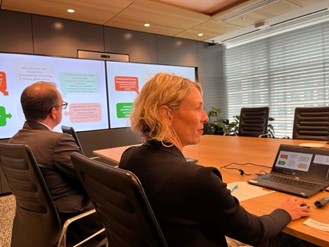
Natalie Egleton, CEO of FRRR, gave an overview of the state of remote, rural and regional communities, sharing some alarming statistics about volunteer fatigue, youth engagement in volunteerism, disaster resilience and the digital divide from FRRR’s Heartbeat of Rural Australia study. Some of those key facts included:
- More than 50% of the community groups surveyed still rely on traditional communication techniques such as telephone, mail and face-to-face;
- 1/3 volunteers are elderly;
- Fewer than 30% rated their internet access as extremely reliable;
- 87% of community organisations play an economic role in their community; and
- 99% of community organisations play a social or cultural role in their community.
It was wonderful to hear the shared passion around the room for remote and rural Australia, and to learn of the incredible programs that so many of the organisations in attendance are currently undertaking to support these areas.
For example, we heard from Sasha Deshon, Community Engagement Manager for Transgrid, about their $1.5 million to a partnership with Regional Development Authority (RDA) Riverina to deliver a major jobs and skills boost to the region. Vicky Power, Head of Community for Suncorp spoke of their $1millon pledge last year to FRRR for a dedicated program to support rural communities impacted by significant natural disasters.
One of the most promising aspects of the roundtable was the clear commitment from the organisations present (including others such as Pepper Money, Stockland, Raine & Horne, Pinnacle Charitable Foundation & NRMA) for future collaboration to tackle some of the many challenges facing remote, rural and regional communities.
We look forward to continuing our role as the conduit and connector for the corporate community to collaborate for the ongoing sustainability and vitality of remote, rural and regional Australia. To find out more about the corporate partnership options or attend one of our roundtables in the future, contact the partnerships team via info@frrr.org.au.
The Foundation for Rural & Regional Renewal (FRRR) today announced the appointment of Georgie Somerset AM to the FRRR Board.
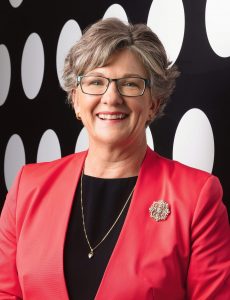
FRRR Chairman, Tim Fairfax AC, said that having someone with Georgie Somerset’s depth and breadth of experience will be a key asset and only serve to strengthen the board.
“Georgie brings a number of different perspectives to the board – as a primary producer, active community member, respected industry leader and experienced board director. With decades of experience managing the challenges associated with living in remote and regional communities, Georgie will bring a fantastic drive and strength to the FRRR board.
“In the last five years, FRRR has more than doubled our granting, and with the challenges and opportunities continuing to face remote, rural and regional communities only increasing, we will benefit from her input as we shape the future for the organisation,” Mr Fairfax said.
On accepting the invitation to join the board, Georgie said, “I have enormous respect for the approach FRRR takes to strengthening regional Australia through targeted and effective support. Being invited to join the board is an opportunity to contribute to the Foundation’s future growth and impact.
“FRRR shines a light on communities doing great work, seed funding and magnifying resourceful solutions and ideas. This positive approach is needed more than ever as communities across Australia grapple with complex challenges such as post COVID migration patterns and demands on services.
“The ability to invest in our future leaders and take a locally driven, solutions-based approach enables FRRR to continue being impactful, and I’m delighted to now be able to help steer the organisation.”
Based in the South Burnett region of rural Queensland, Georgie is actively involved in the operation of the multi-generational family beef business on her family’s cattle property.
As an industry leader, Georgie was a founder, and later president, of the Queensland Rural Regional and Remote Women’s Network (QRRRWN) and held roles with the National Foundation for Australian Women, as well as being a founding member and Chair of the Red Earth Community Foundation.
Currently Georgie is the president of AgForce Queensland, Deputy chair of the Royal Flying Doctor Service (Queensland section), Director of the Australian Broadcasting Corporation (ABC), the National Farmers Federation and the RFDS Foundation. Georgie also serves on a number of advisory committees for regional development, tertiary institutions, industry and community groups and a number of government review panels.
In addition to Tim Fairfax AC and Georgie Somerset AM, the other members of FRRR’s board include:
- Anne Grindrod, Deputy Chair
- Paddy Handbury
- Patrick Myer
- Annabel White
- Bruce Scott OAM
- Sue Middleton
- Andrew McKenzie JP
- Hon. Simon Crean
- Hon. John Sharp AM
- James Flintoft
Jeremy Yipp and Lauren Clair from our partners at CCI Giving recently joined one of our team meetings as part of an overview of the CCI Giving / FRRR partnership, which supports mental health in remote, rural and regional Australia, to discuss the “awesomeness” that is the In a Good Place (IAGP) program.
IAGP is a national program that focuses on place-based, grassroots mental health and wellbeing. It supports community-driven projects, services, activities or initiatives, and targets vulnerable community members who are at risk of, or are experiencing, mental health issues. Like other FRRR programs, it supports communities doing it for themselves. Projects typically bring people together, sometimes to heal, always to learn. The program helps to bring mental health and wellbeing out into the open – making it OK to talk about, OK to reach out, OK to ask for help.
CCI Giving is a foundation established by Catholic Church Insurance in 2017, and in its relatively short history, has already distributed more than $1.8M in grants, to over 200 projects right across Australia.
A large part of these funds have been distributed via the IAGP program, which began as a five year partnership in 2018, distributing $200,000 annually. We were very pleased to jointly announce a continuation of the partnership earlier this year, with a subsequent agreement in place for a further five years, and distributions increasing to $250,000 each year.
In the session, Jeremy shared one of his favourite projects with us, which was a $20,000 grant awarded to Kanyini Connections. They have developed an equine-assisted therapy program specifically for young veterans, run by a qualified equine therapist who is a young veteran herself, with lived experienced of PTSD. Funds will support two 12-week equine-assisted therapy programs to provide intensive support to 48 young veterans.
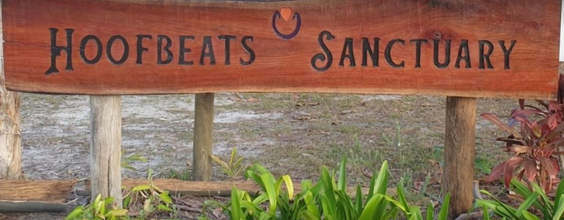
Jeremy said, “It’s projects like these that need seed funding behind them to prove up their model, to see what works and what doesn’t, and why. Without assistance through programs such as the In a Good Place program, these projects may never have the opportunity to really get off the ground and reach their full potential, or it would take a lot longer for them to do so.”
The In a Good Place program has a definite and important role to play in supporting rural communities in reducing the stigma surrounding mental health and the importance of promoting and supporting good mental health and wellbeing. While applications have closed for this year, perhaps now is the time to start planning your community’s project for the 2023 round.
FRRR has today welcomed the extension of DGR-1 status for the country’s Community Foundations, in particular those in regional areas, which was confirmed in Tuesday night’s Budget announcements. This special status means that from 1 July, they can directly receive tax deductible donations from a broader range of donors to support more place-based philanthropy, which FRRR has long-championed.
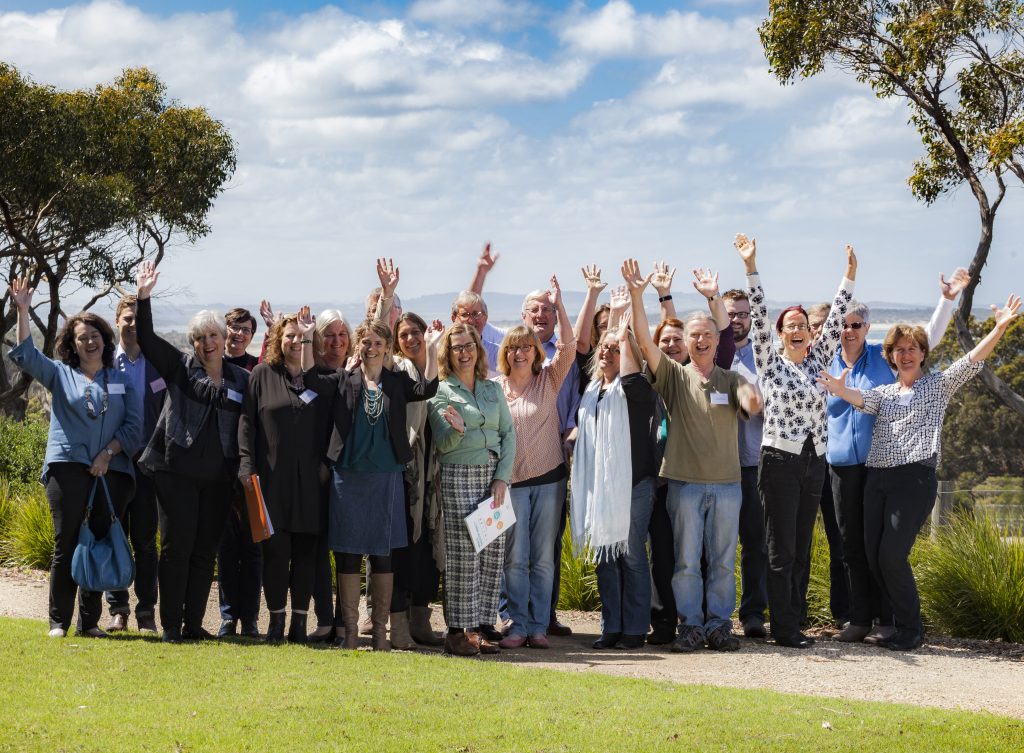
Place-based approaches are critical, especially given the compounding impacts of back to back disasters and the challenges and opportunities in each community. They allow local people to prioritise resources to deliver outcomes that they know will make the most impact, taking account of the unique circumstances of every place.
For the rural and regional communities that have a local Community Foundation that is a member of Community Foundations Australia, this legislative change will mean that they will soon be able to directly accept tax deductible donations to channel toward their local community needs, as well as give to local community organisations that do not have DGR-1 status.
FRRR CEO, Natalie Egleton, says that this reform paves the way for much-needed additional local giving, and that FRRR will continue to support rural communities across Australia to address local and regional issues.
“FRRR was established in 2000 through a partnership between the Australian Government and philanthropy to facilitate long-term and flexible funding to reach and stay in remote, rural and regional communities. In fact, we were set up to address many of the issues raised in the Pride of Place Inquiry, which recommended this DGR extension. We have long championed the important role of place-based philanthropy and indeed, have channelled more than $135 million to in excess of 12,000 projects to support local projects in remote, rural and regional Australia.
“Of this, more than $22 million has gone to support Community Foundations, with some $6 million via the 22 Community Foundations that we have partnered with through a Community Foundation Account. We are proud to have been able to help these Foundations raise and distribute those funds, and to have played a key role in the establishment, development, and promotion of the sector as a whole. We welcome this legislative reform, which will enable even more funding to be channelled locally,” Ms Egleton said.
Over the coming months, FRRR will work closely with the 19 Community Foundations that currently hold Community Foundation Fundraising Accounts and are in a position to take advantage of this legislative reform.
“FRRR will continue to back regional Community Foundations and to facilitate funding and collaborations for other remote, rural, and regional not-for-profits and community groups to advance resilient, vibrant, sustainable regional communities. Our role in connecting resources and supporting the capacity of local leaders and not-for-profit organisations, and having a long-term focus in our work, will remain a key pillar of FRRR’s work.”
Community Foundations Australia commented that “FRRR has been the engine room for the development of Community Foundations in regional Australia, where four out of five of these Foundations operate. This reform may change how we work with each other, but it does not change our shared ambition of working together to support regional community development. Our sector as a whole very much looks forward to building on our well established relationship with FRRR for mutual benefit.”
For more information on the services that FRRR offers, visit www.frrr.org.au.
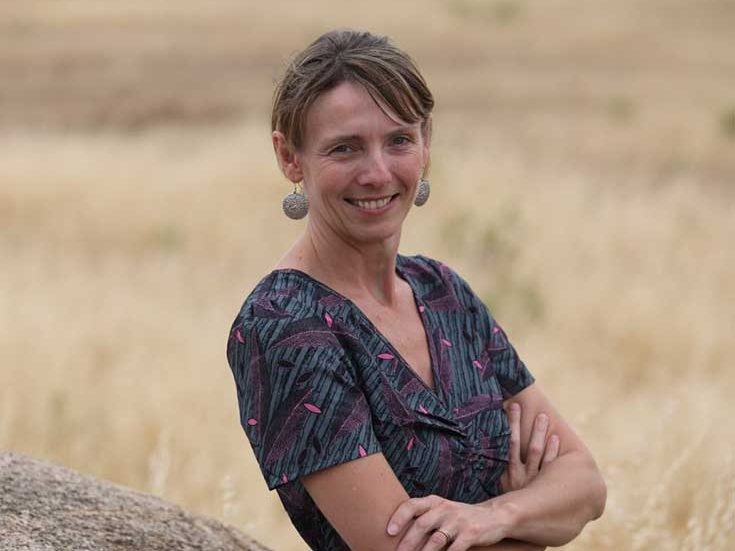
The Australian Philanthropic Services and Fiona Higgins spoke with FRRR’s CEO Natalie Egleton and Chairman Tim Fairfax AC about the crucial role of flexible funding and the impact that private philanthropy can make to regional and remote communities across the country.
“We now strive to mirror the kinds of healthy community systems we are trying to foster and support in the regions,” explains Natalie.
By Natalie Egleton, CEO
Over the past month, I’ve had dozens of conversations with community leaders, local, state and commonwealth governments, philanthropic foundations, and corporate partners, that have all circled around the question of disaster resilience and best practice giving. I’m encouraged by the growing sentiment that recognises the increasing frequency and severity of disasters, yet also see a pressing need to shift our approaches to funding disasters as one-off events.
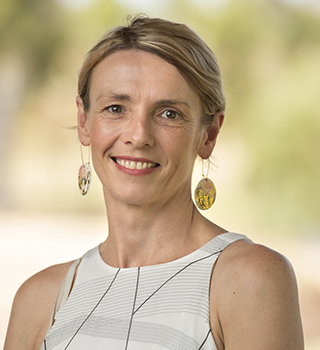
The floods that have devastated so many areas across NSW and parts of Queensland this month are yet another in a series of disasters that rural communities have had to face in the past year. Many of those communities have experienced prolonged drought, bushfires, minor flooding, and now catastrophic flooding. For these communities, the rebuild, recovery, and long-term renewal will call on yet more reserves of social capital. Support will be needed that doesn’t compartmentalise their various disaster impacts and which acknowledges the deeply fatiguing and depleting effects of successive disasters on people, communities, and local service systems.
At FRRR, we view disasters as environmental shocks that remote, rural, regional communities regularly experience. We know they are inevitable and increasing in frequency and severity; what makes them complex is not knowing when they will occur, where, or the severity and nature of their impact.
Recovery and preparedness are only as strong as the social ties, quality of community infrastructure, depth and breadth of skills and networks, cultural knowledge, and the health of local service systems, non-profits, and community groups.
That’s why investing in social capital – preparing for future disasters and adapting to changing conditions after a disaster – underpin our ongoing work outside of disasters. Mitigation and making advances through technology is vital, but only effective when people within communities – those who will act first and drive recovery and preparedness – are invested in.
Our approach is to provide support where there are gaps or quick responses are needed in the short term, however we focus the majority of funds on the medium-to-long term recovery and future preparedness efforts of rural communities. Funding medium to long-term recovery ensures that resources are available to help communities when they are ready, beyond their immediate needs that arise during the emergency.
Adapting and evolving
In operational terms, FRRR has a standing disaster philanthropy model that we scale when a major disaster occurs. Each year, with support from hundreds of donor partners, we provide grants and capacity support to around 500 hundred remote, rural and regional communities across the country via almost 800 grants. This reach gives us a good footprint and connection points that we can naturally tap into when disasters occur.
Right now, we have almost 1,500 active grants in place for diverse projects in remote, rural, regional communities nationally; around 40% of these are supporting community-led recovery and resilience initiatives.
When the 2019-20 bushfires hit FRRR had to scale our processes very quickly. We expanded existing grants programs that have a national footprint, as well as brokered funds management for corporate partners to support short-term recovery.
In the space of a month, FRRR went from having about 700 donors to 30,000 donors. We had to ensure our systems could cope and we needed to scale up our communications and finance management resourcing. At the same time, we were engaging in working groups and forums with Governments, philanthropy, and connecting with fire-affected communities where we had active grants and relationships.
When COVID-19 hit, our biggest challenge, aside from looking after our people, was adjusting our community engagement approaches.
While regional Australia is great at working remotely, working on recovery, trying to engage with largely volunteer-led community groups and not-for-profits is really done best in person.
Understanding the local context can be done remotely but it’s not ideal. We also found that as restrictions came into place, a lot of community groups went to ground.
We knew there would be significant impacts from COVID-19 on recovery from the 2019-20 bushfires because the lockdowns would essentially stall social recovery processes, which are most effective when people come together physically, to process and heal.
One of our big, but unsurprising observations during COVID was the gaping hole in digital inclusion – equitable access to stable telecommunications, low levels of digital connectivity in households, and low digital literacy in what are largely ageing populations. In the Snowy Valleys for example, we learnt that 24% of people didn’t have an internet connection at home. In Tasmania, connectivity is inconsistent and communities very isolated.
At the same time, we were seeing independent news publications falling over and rural communities were becoming even more isolated.
The shocks and disruptions just kept coming and the readiness wasn’t there. And then, large parts of NSW were impacted by once-in-a-century floods.
We hear a lot about needing to increase resilience and I am of the firm view that that is coming from the wrong angle. There is an abundance of resilience, but only so much that any strong community can absorb and bounce forward from.
Embedding disasters in regional development practice
The past year has proven the repeated warnings of many. The frequency and severity of natural disasters will cost society, economies, biodiversity, and liveability. We need to do things differently.
In our work partnering with a community in NSW focussing on their non-profit sector capacity building before the 2019/20 bushfires, it was clear that those organisations and community leaders were more ready to respond to the recovery process and opportunities it presented. These same communities are now facing an unimaginable clean up and recovery from flooding. Our role is to be there, offer patience, continuity, flexibility, and agility to move how and when the community is ready with fit-for-purpose funding and resourcing support. The critical piece here is that when we do this work between disasters, reserves of social capital can be replenished and expanded. Communities are more able to engage with mitigation and do essential future-focussed work to strengthen their response to risk and climate change.
Innovation and renewal – applying learnings to support flood-impacted communities
Since the bushfires, we have reviewed and adjusted our approach to funding the core operating costs of the community groups that are so essential to the fabric and vitality of remote, rural and regional communities.
With the funding model of our national small grants programs being relatively unpredictable and dependent on donations from our partners, it is difficult for FRRR to commit to resourcing beyond one-off grants that seed and strengthen locally led projects.
However, throughout the pandemic, the FRRR Board recognised that the depletion of fundraising revenue, volunteer capacity, and local sponsorships, coupled with increased vulnerability and successive disasters, presents a serious threat to the survival of community groups and local not-for-profits. We recognise this as being critical at this point in time, so we will support core overhead costs until the picture changes. It will still be one-off funding but will help to keep the lights on and people working on key issues, while communities and organisations adapt and evolve through the recovery.
This approach translates to better practice for disaster philanthropy overall.
Given what is unfolding in NSW and Queensland at the moment, it is time that we stop looking at disasters as one-off events and view disasters as a constant. This means that we need to invest in underlying capacity and capability at the community level.
The new National Resilience, Relief & Recovery Agency, along with several State Agencies, are now modelled through an all-hazards lens and hopefully the policy and funding settings will follow. Philanthropy can then play a meaningful role beyond responding to successive crises.
It’s certainly where we are focussing more and more of our efforts, and we welcome more conversation on this.

